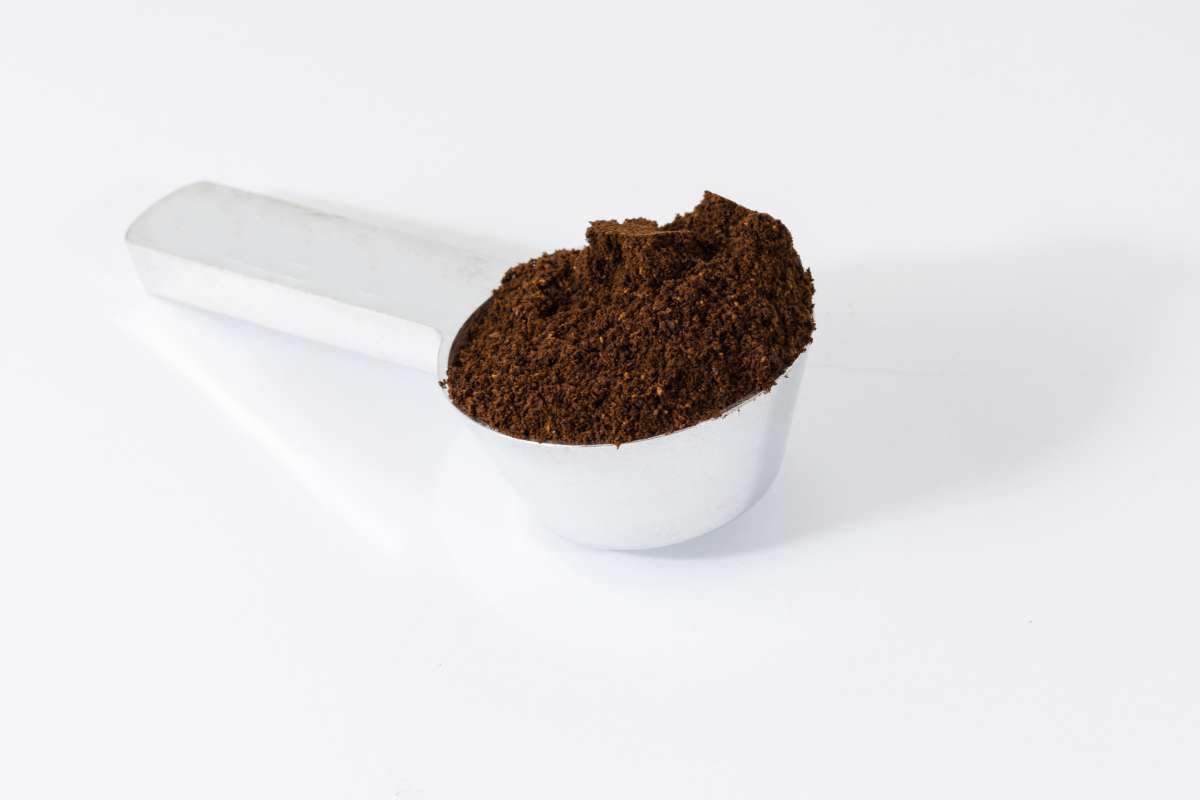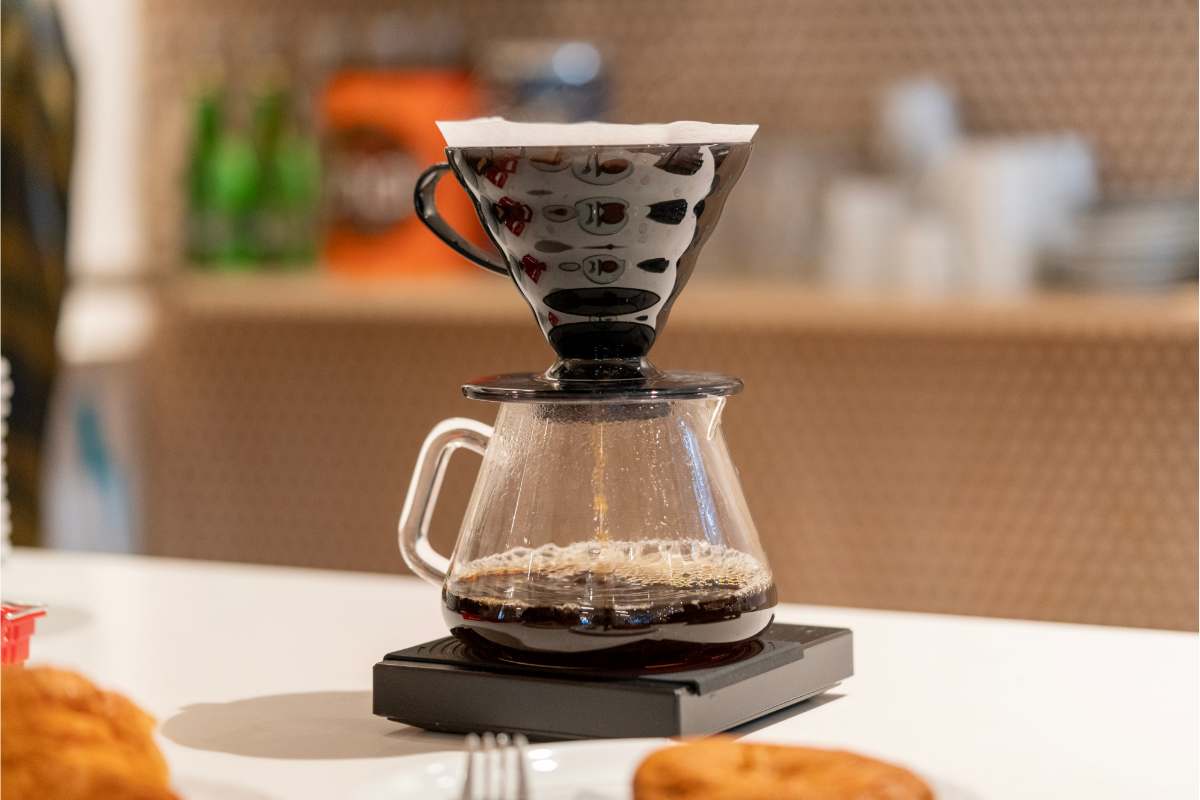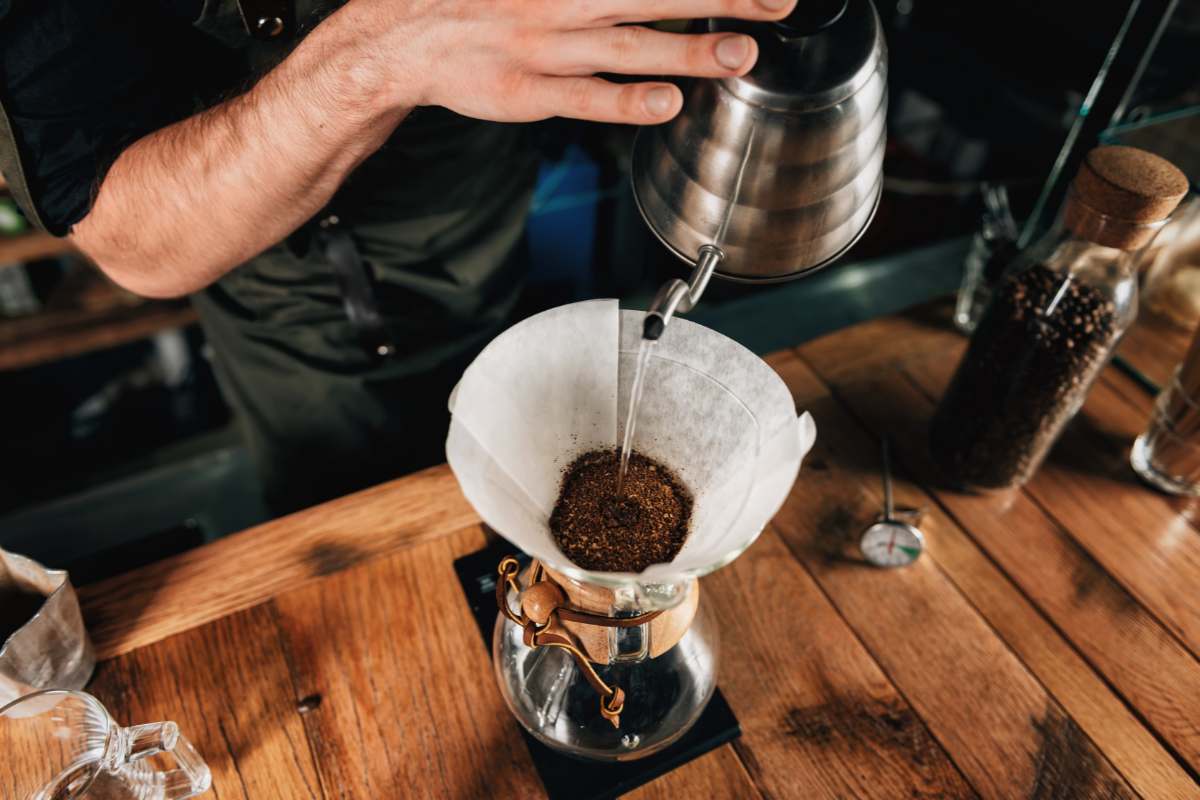Last Updated on December 20, 2023
Imagine you could significantly elevate your coffee experience with just a bit of simple math.
That’s exactly what happens when you master the coffee-to-water ratio. The ratio of ground coffee to water plays a huge role in your brew’s quality. And once you get it right, achieving the coffee you want consistently becomes so much easier.
Let’s dive into the coffee-to-water ratio is and how it can help turn your daily cup into a masterpiece.
The Ideal Coffee-to-Water Ratio
A 1:16 ratio, meaning one part of coffee by weight for every 16 parts of water, produces well-balanced coffee of average strength. Make that ratio the starting point for your experimentation, and adjust according to your tastes.

Why Does It Matter?
What makes this ratio so important is that it determines the concentration, and hence the flavor, of your coffee. It’s not just about the quantity of coffee or water you use, but about the balance between the two.
The right ratio gives you a balanced extraction, allowing the water to effectively pull out the flavors and oils from the coffee grounds and yield a delightful cup.
Too much coffee in relation to water, and your brew becomes overpoweringly strong and bitter. Too little coffee, and you’ll end up with a weak, underwhelming cup.
Total Dissolved Solids
If we can get technical for just a moment, let’s talk about total dissolved solids (TDS). This is a measure of your coffee’s concentration. It refers to everything in your cup that is NOT water—in other words, every part of your coffee that has come from the bean.
TDS is typically measured in milligrams per liter of water. You can actually buy a device called a refractometer that measure it quite precisely—and indeed many professional baristas do. A higher TDS typically indicates a stronger coffee, while a lower TDS points to a milder flavor.
A proper coffee-to-water ratio, paired with consistent brewing practices, can help you get the right TDS every time, ensuring ideal strength and flavor in your cup.
The Best Way to Measure Your Coffee and Water
Precision is the key to nailing the perfect coffee-to-water ratio. Measuring your coffee and water by weight rather than volume gives you the most accuracy and consistency,
You can use a digital kitchen scale for this. It will help you replicate the same strength and flavor in every brew, regardless of the coffee type or brewing method. Look for a scale that is made specifically for coffee which measures to one-tenth of a gram.

Start with that 1:16 ratio for average-strength coffee. For a stronger kick, you might want to try 1:14. If you like milder coffee, then a 1:18 ratio works wonders. Experiment within these ranges to find what best suits your palate.
What If You Don’t Have a Scale?
Not everyone has a scale at hand, but that shouldn’t stop you from brewing great coffee. In this case, use measuring spoons for your coffee and standard measuring cups for water.
As a rough guide, a standard coffee scoop—which is two tablespoons—typically holds about nine grams of coffee. One cup (eight ounces) of water is approximately 237 milliliters. A scoop-and-a-half with one cup of water will get you close to the desired ratios, although it won’t be as precise as using a scale.
Remember, this isn’t a one-size-fits-all situation, it’s a starting point. Your perfect cup might be a little stronger or milder than the suggested ratios. Don’t hesitate to adjust and experiment until you find the right balance. The journey to discovering your perfect cup is as enjoyable as the coffee itself, and the reward is being able to repeat that cup over and over again.
Next time you brew, pay a little extra attention to your coffee-to-water ratio and taste the difference it makes.


